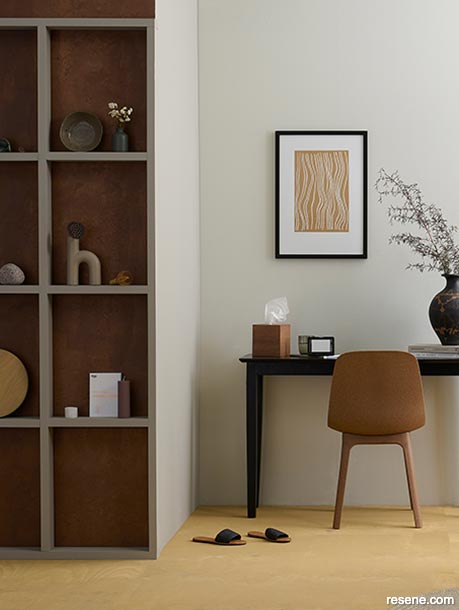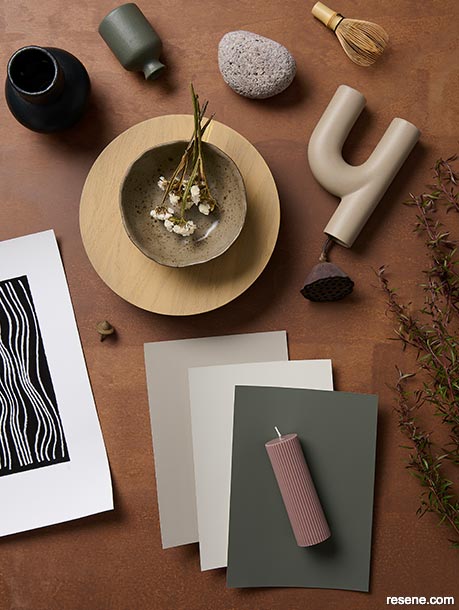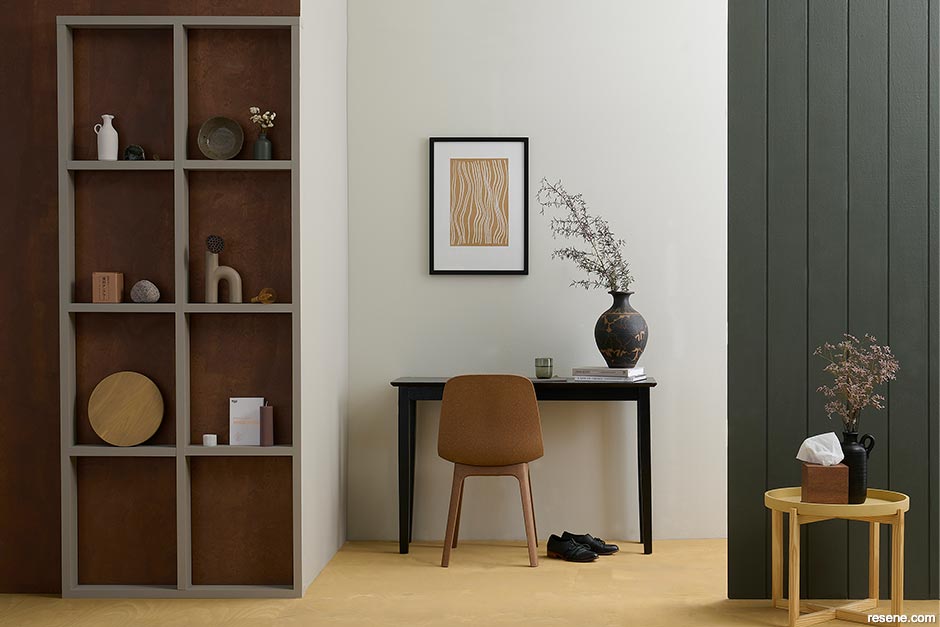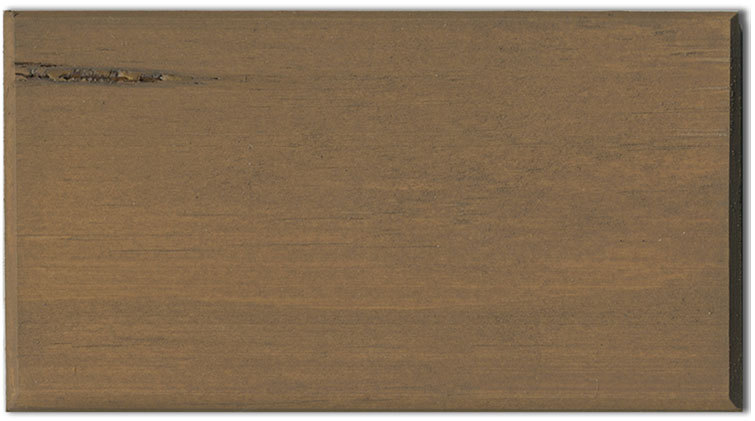From the Resene colour inspiration – latest looks gallery
Japanese design proudly makes reference to thousands of years of traditional arts while also being often considered the epitome of what’s contemporary and modern.
It’s clear, strong voice ranges from simple designs and geometrics to bold use of colour, cute patterns and cartoons. From minimalism to pop graphics, we can see Japanese design’s influence all over the Westernised world and beyond. From nature-inspired motifs, to the use of timber cladding and black lacquer, there are countless ways that Japan has influenced design and architecture in New Zealand, Australia and beyond.




Japan has a diverse artisanal history and an incomparable attention to quality due to the widely held cultural belief that the things you create are a direct reflection of not only your honour but also that of your family. The country has been responsible for the creation of ceramics, woodcut prints, calligraphy, origami, kabuki theatre, manga and anime, which are only a small selection of the arts which were developed there. Craftsmanship is consistently done to the highest degree of quality possible.
While Japan might be recognised for ‘zen’ minimalism – think pristine spaces made up of glass and bare concrete – there is far more diversity in Japanese interiors and plenty that wouldn’t fall into the category of true minimalism. While Japanese simplicity, purity and restraint are values that are embraced as an antidote to our fast, frenzied lifestyles, there are also plenty of more eclectic Japanese spaces which are layered with texture, plants and meaningful objects.
In traditional Japanese aesthetics, wabi-sabi is a worldview centred on the acceptance of imperfection. While the philosophy can be challenging to interpret into a Western context, it is rooted in Zen Buddhism and Chinese Taoism and celebrates the beauty and story of imperfections with a simultaneous aim to rid one’s surrounding of all that isn’t useful or aesthetically pleasing. Wabi-sabi has a lot in common with minimalist modernism, but it’s more intuitive, asymmetric, warm and fluid. It looks to keep the essence of a design without losing the poetry. Clean, but not sterile. Simple, yet smart.

Natural timber stains, distressed plaster walls and muted colours are all commonplace and tie into the wabi-sabi aesthetic – a movement that embraces things that look poor but can still be expensive, which is the opposite of what most of the world wants; something that looks expensive but is cheap. Making do and mending is deeply engrained in Japan’s culture, historically speaking, and these principles fall hand-in-hand with wabi-sabi. While filling your home with items that might look stereotypically Japanese is one way to create a space that’s inspired by Japan, a more holistic method is rediscovering the beauty in items you already own and finding a way to honour or reuse them. And all that something might need is a fresh coat of Resene paint or timber stain to make you fall in love with it again.
Japanese culture is also keenly in tune with the environment and Japanese people celebrate nature and the seasons like no one else. The Shinto religion, indigenous to Japan, influences Japanese architecture in terms of materiality and form. Materials are most cherished in their natural form, such as wood and stone, and there is a prevailing preference towards earth-toned colour palettes which makes paint colours that reflect hues of nature, like Resene Teak, Resene Quarter Karaka, Resene Triple Merino and Resene Settlement as well as timber stains like Resene Colorwood Uluru and Resene Colorwood Pickled Bean, ideal choices for creating a Japanese-inspired look at home.
Strong geometry features prominently in Japanese design because shapes are considered to have far deeper cultural meanings, so be sure to pay attention to the shapes, lines and forms that exist within your space already as well as the ones you plan to introduce through furnishings and décor. Squares and rectangles represent artificial forms not often found in nature and are often used to create the outline of the kimonos, lacquer boxes, chests, screens and some ceramics. Curves, circles and arches represent intuition and inspiration for Japanese people, but these shapes are primarily used as a counterpoint to the prevalent linearity.
In this home office, a high ceiling, a wall clad in tongue-and-groove panelling painted in Resene Quarter Karaka and the shallow grid shelf painted in Resene Settlement all bring that strong verticality and geometry. As a counterpoint, a few circular décor items have been included such as the round dishes on the shelf, the curvaceous vase on the desk and the round side table painted in Resene Teak. The desk painted in Resene Enamacryl gloss waterborne enamel harkens back to traditional Japanese lacquerware while the timber floor stained in Resene Colorwood Uluru, the ply wall stained in Resene Colorwood Pickled Bean, clay pots and dried flowers have been included as reminders of nature. Together, these items create just the right amount of contrast and balance for a space that feels both zen-like and authentically Japanese.

Styling by Kate Alexander. Photography by Bryce Carleton. 2021
Colour inspiration - latest looks gallery
Get inspired with colour and the latest decorating and colour trends! Select just the right look and mood for your space.
Filter: kids & teens | greens | blues | yellows | neutrals | oranges/browns | pinks/reds | greys/blacks | violets | pops-of-colour/multi-colour
A nouveau way of thinking
Art nouveau inspired deep green bedroom
A full circle
There are four key principles that designers use